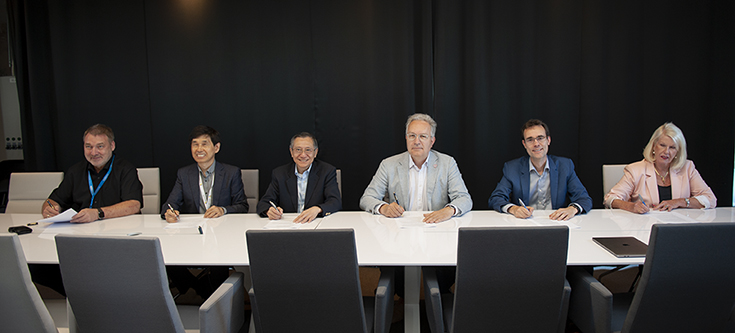New secure 100 Gbps link is set to boost research and education collaboration between Asia Pacific region and Europe with shorter, faster, cheaper connectivity.
An international consortium of six research and education (R&E) networks, including AARNet (Australia), GÉANT (Europe), NORDUnet (European Nordics), SingAREN (Singapore), SURF (The Netherlands) and TEIN*CC (Asia-Pacific), recently announced the launch of Collaboration Asia Europe-1 (CAE-1), a new high performing 100 gigabit per second (Gbps) link between Singapore and London for research and education.
This new link will provide additional capacity to meet the rapidly growing
bandwidth needs of trans-national education and data-intensive science
collaborations between Europe and the Asia Pacific region.
By working together, the consortium of six R&E networks, operating across
11 time zones, was able to procure far beyond what a single R&E network
could procure across such a vast 13,000 kilometre distance.
Shorter, faster, cheaper
CAE-1 is a significant step forward to closing the high-speed connectivity gap between Asia and Europe, providing shorter, faster and cheaper connectivity for research and education.
The new CAE-1 100 Gbps link is routed via the Red Sea and Indian Ocean. This
path between the two continents is more direct than the links routed via the
North Atlantic Ocean, across North America and across the Pacific Ocean that
have carried much of the R&E traffic to date.
A more direct and shorter route between Asia and Europe secures lower latency
and reduced costs, two important factors in the race to meet customer demands
due to increasing R&E traffic between the two continents.
The signing of the Consortium
Agreement took place at the TNC19 Conference in Tallinn, Estonia.
After initial testing that began on 15 April, the link went into production in
May 2019.
CAE-1 is closely connected to other intercontinental R&E network collaborations established recently, such as the ANA (Advanced North Atlantic Collaboration, a collaboration across the North Atlantic Ocean) and the APR (AsiaPacific Ring, a collaboration between Asia and the USA).
These initiatives are all implementations of the GNA (Global Network
Architecture), an international effort to develop a set of global collaboration
principles, on a technical level as well as in regards to sharing costs and
aligning investments. The GNA has defined reference architecture and created a
roadmap for both national and regional R&E networks to seamlessly support
bandwidth for research and education. These collaborative implementations are
referred to as the GREN, the Global R&E Network.
This story first appeared on the GEANT website. Read the full story.

